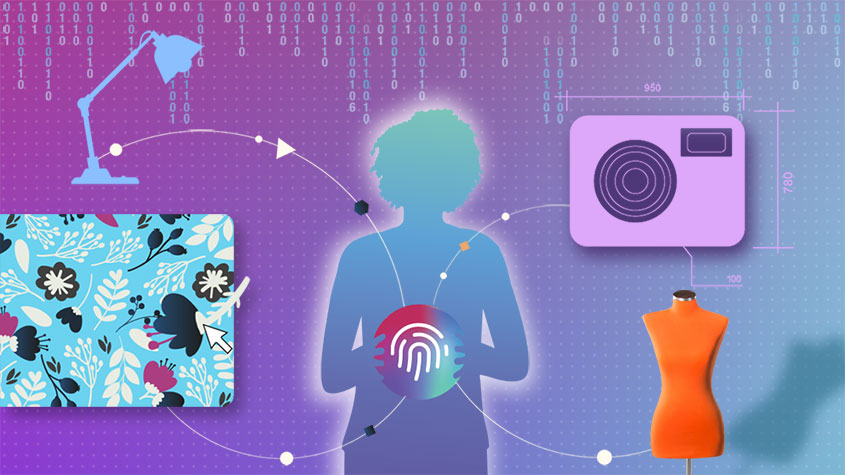By Anne Rose, Associate and Co-Lead of the Blockchain Group, Mishcon de Reya, London, England
Blockchain platforms create a transparent and (arguably) immutable (i.e. unchangeable) chain of information. These characteristics could provide intellectual property (IP) offices with an opportunity to transform the registration of IP rights by making the process more cost effective, faster, and more accurate and secure. Further, the technology could provide an opportunity to transform the efficiency and transparency of rights management information.

What are the basics of blockchain technology and what is its potential to enhance the registration process for trademarks and designs, as well as to provide evidence of use? For unregistered design rights and copyright, how might blockchain technology provide better evidence of the creation of unregistered designs or new copyrighted works?
Blockchain technology: the basics
Simply put, blockchain is a form of distributed ledger technology, which creates a secure, transparent record of every transaction and reports the transactions undertaken to everyone on the blockchain platform. By way of example, if I wanted to prove the creation of this article (i.e. my copyright) on a blockchain, it would not store this actual article. Rather, it would record a hash (an encrypted unique string of letters and numbers) which uniquely identifies this article, allows verification of authorship and provides evidence that the creative work (i.e. this article) existed at a given time, albeit without revealing its actual contents. This hash is then linked with any other hashes that were made at the same time and these are recorded in a "block". Each block is then turned into a hash, with every new block also referring to the hash of the previous block, creating a cryptographically connected chain of blocks. Any modification to an older block will break the chain because the hash of that block will no longer be validly referenced in the subsequent blocks.
Blockchain technology could make the registration process for designs and trademarks more efficient by cutting down on some of these processes and procedures.
Registration of a design or trademark: current position
To better understand the potential applicability and value of blockchain technology to IP protection, let us take registration of a design or trademark in the European Union (EU) and/or the United Kingdom (UK). Prior to registering a design or trademark, you need to decide where you want to protect it, for example, in the EU and/or the UK. Second, you need to consider issues of registrability. For a design, is it: (i) "new"; and (ii) does it have an individual character (i.e. does it give a different overall impression to an informed user compared to any earlier designs which are already in the public domain)? For a trademark, you need to consider if the trademark is distinctive and capable of registration, and the goods and/or services for which you wish to obtain protection. You will also want to clear any potentially conflicting earlier rights by carrying out appropriate searches. Currently, you can use the Design View application and TMView of the European Union IP Office (EUIPO) to check the status of designs and trademarks in EU Member States, but may also need to conduct broader clearance searches for example, by using the WIPO Global Brand database and the WIPO Global Design Database, or by conducting commercial searches. Finally, you need to pay the application fee and file the application at the EUIPO and/or the UK IP Office. Assuming there are no objections by the Registry or oppositions by third parties, design rights may be registered in a matter of days from the date of the application, and trademarks may be registered within four months from the date of the application.

Registration of a design or trademark and evidence of use
Blockchain technology could make the registration process for designs and trademarks more efficient by cutting down on some of these processes and procedures. For some trademark applications, for example, where it is not possible to show that the trademark is inherently distinctive, it will be necessary to demonstrate that the mark has acquired distinctiveness through use. Assuming the necessary changes were made in the law to allow for actual use of a trademark (for example) to be added to and recorded on the official register, evidence and information of actual use of a trademark in trade, as well as the frequency of such use, could be easily shared and available for everyone to see on a blockchain. If trademark owners decided to make such information freely available, this would save significant time and costs. Recognizing its potential, WIPO is facilitating dialogue on blockchain to gain a better understanding of its potential use in the context of IP.
In order to establish and maintain trademark rights in the EU and the UK after registration, it may become important for a right holder to demonstrate genuine use over a particular period. The ability to provide evidence of continuing or prior use of a trademark can be a laborious process involving the time-consuming and costly collection of relevant records to demonstrate use of a trademark.
For blockchain technology to take off in the management of IP rights, there would need to be an agreed and internationally supported set of standards.
To assist with this process, one could deploy a smart contract on a blockchain (i.e. a self-executing computing code that automatically processes its inputs when triggered). Such a contract could provide evidence of a time stamp of first or subsequent use of a trademark, which could then be presented (if accepted) to the court/Registry as evidence. In May 2020, WIPO launched WIPO PROOF, new digital business service that provides electronic signed certification to prove the existence of a digital file at a specific date and time. By circumventing the usual reliance on accounting and other records (which may not demonstrate sufficiently the actual use of the trademark) and archived paper records, the costs of proving use may be dramatically reduced. This could, in turn, lead to a reduction in the risk of challenges to trademark registrations.
Unregistered IP rights: design rights and copyright
Blockchain technology can also potentially assist with creating a register of unregistered IP rights such as unregistered design rights and copyright as it can easily provide evidence of the time of creation, rights management information (if applicable) and jurisdictional requirements.
Careful thought, however, would need to be given to the design of such a platform. A blockchain-based registry, to which any member of the public could upload rights management information as a time-stamped entry, would only be useful if an authoritative and trusted third party, such as an IP office or a Collective Management Organization was involved. Alternatively, right holders may also be account holders, meaning that the Registry would not just record but would also facilitate the transaction of IP rights. In order to unleash the full potential of a new blockchain-based copyright management system, a large number of right owners would need to use it, and it would need to cover a sufficient amount of copyrighted works. As noted by Alexander Savelyev, "as the number of users increases, however, the system would become even more valuable and able to attract a wider user base" . Assuming these methods are scalable, reliable and easy to adopt, one could envisage a situation where exploitation of a work (for example, a sound recording) could be dependent on registration in a digital ledger. However, given the challenges associated with creating a blockchain-based registry holders of unregistered rights may consider safeguarding their intellectual assets using WIPO’s new business service, WIPO PROOF (read more below).
WIPO PROOF – Trusted Digital Evidence
WIPO PROOF is a new digital business service that provides a date- and time-stamped digital fingerprint of any file, proving its existence at a specific point in time. This new service complements WIPO’s existing intellectual property (IP) systems. It is specifically designed for an increasingly digital world where innovation and creativity are enabled by technology, big data and global collaboration.
Another issue to consider is the authenticity of the information on a blockchain. Blockchains are append-only ledgers – information can only be changed in exceptional circumstances. If information on a copyrighted work is entered incorrectly, there is very little one can do without appropriate technical and governance processes and systems in place to remedy the situation.
Another issue to consider is how to manage a scenario where copyright is transferred outside of a blockchain network. Take, for example, a situation where you have an on-chain token, which represents an off-chain good (such as the copyright in a book). In this context, it is important to ensure that anything that happens to the off-chain good (i.e. the copyright in the book) is accurately recorded in the digital ledger. Without appropriate human coordination, rather than reducing information and increasing trust, the introduction of a blockchain-based system may have the opposite effect.

Final thoughts
This article briefly considers some of the benefits and limitations of using blockchain technology in registering and providing evidence of the use of IP. For blockchain technology to take off in the management of IP rights, there would need to be an agreed and internationally supported set of standards. It will be important for regulators and policy makers to work together to help shape the implementation of this technology in relation to the registration of IP rights.
For unregistered IP rights, such as copyright, we have considered some benefits and limitations of using blockchain technology. There are many issues from a legal, technical and socioeconomic perspective to consider. Only by addressing these issues will blockchain achieve a sufficient degree of scalability, reliability and market adoption to have an impact on copyright in the digital environment.
This article considers issues from the perspective of English law and nothing in this article constitutes legal advice. There are many topics that this article does not cover including, for example, the use of blockchain in rights management and anti-counterfeiting.



